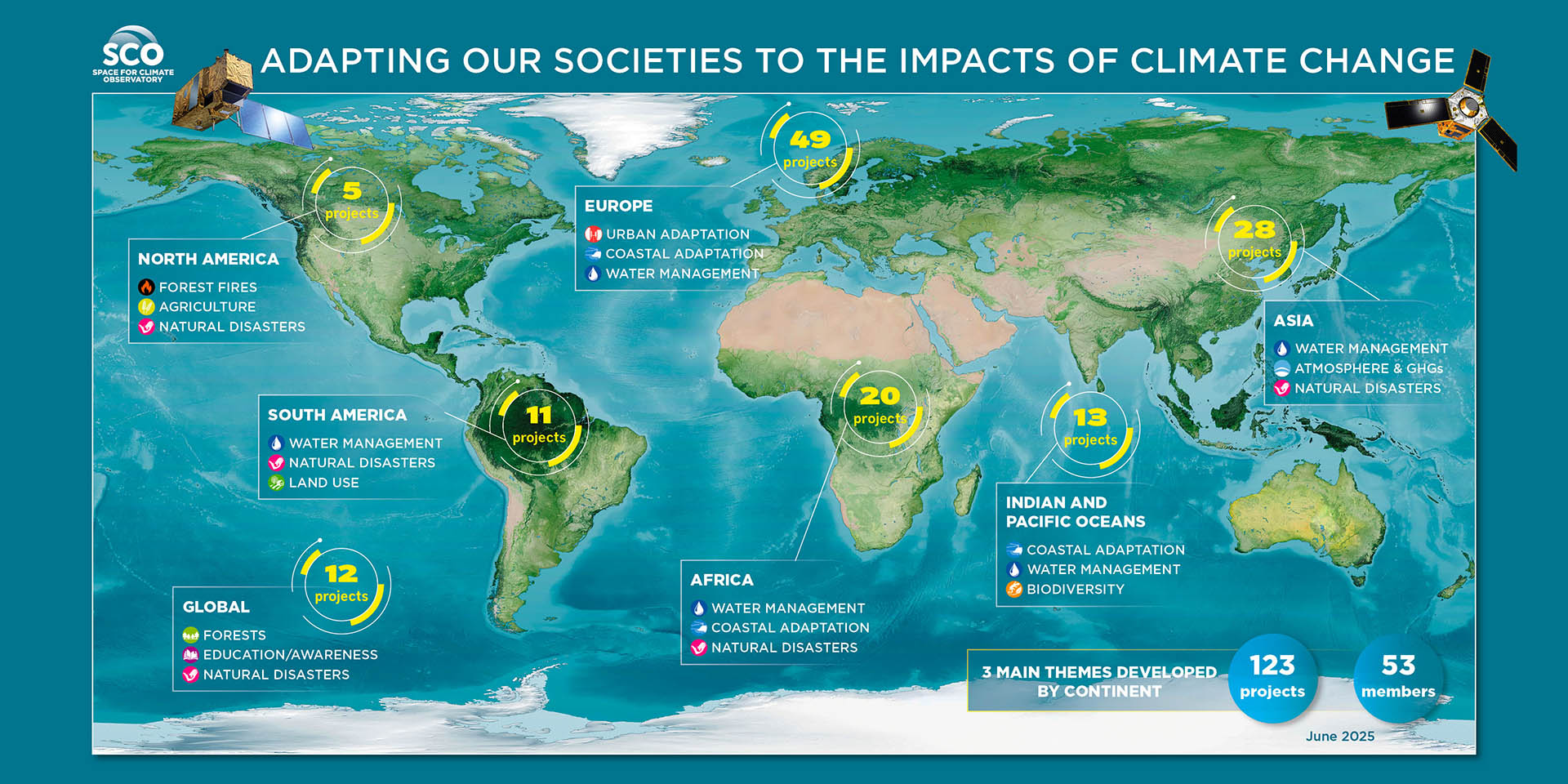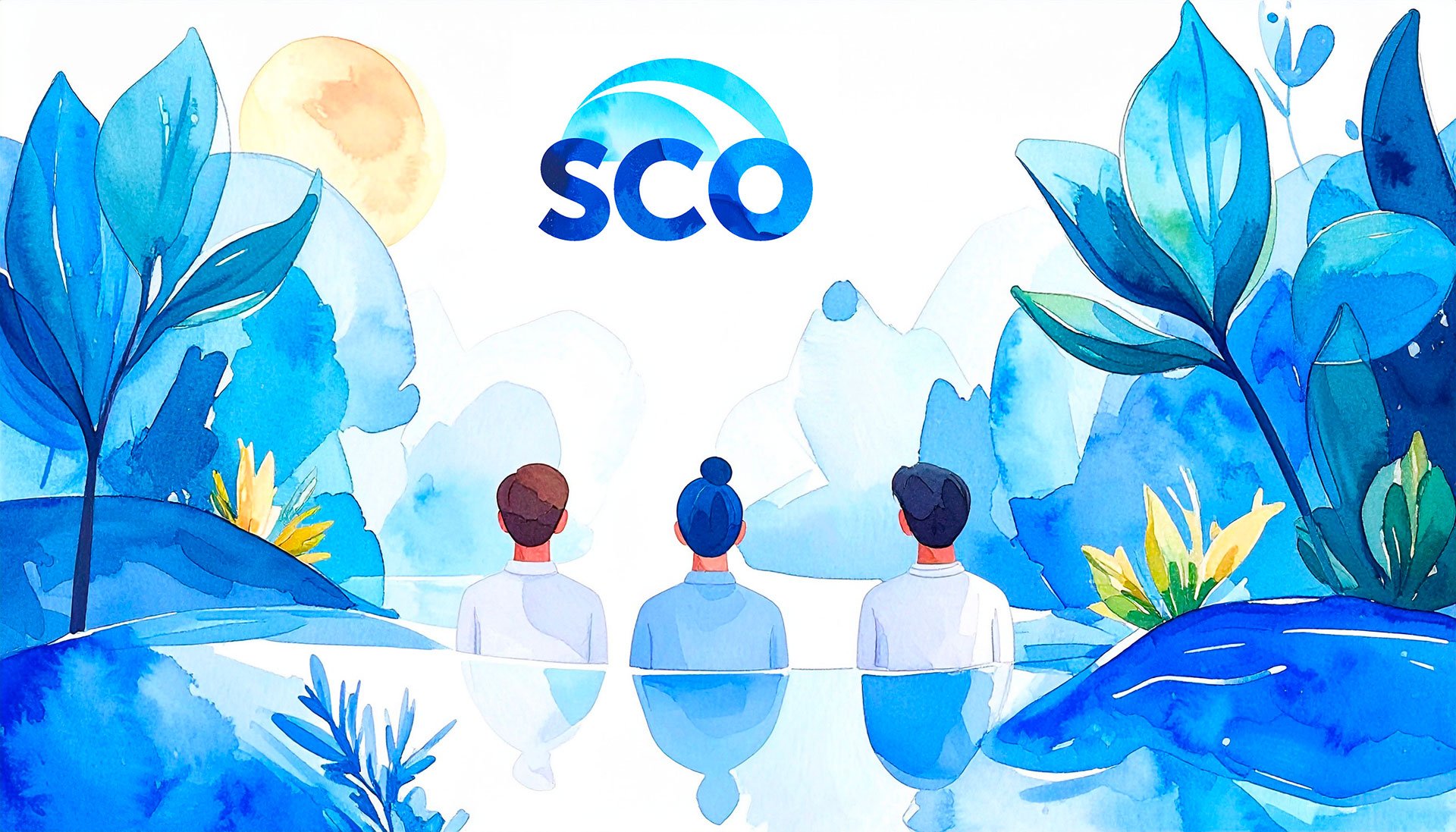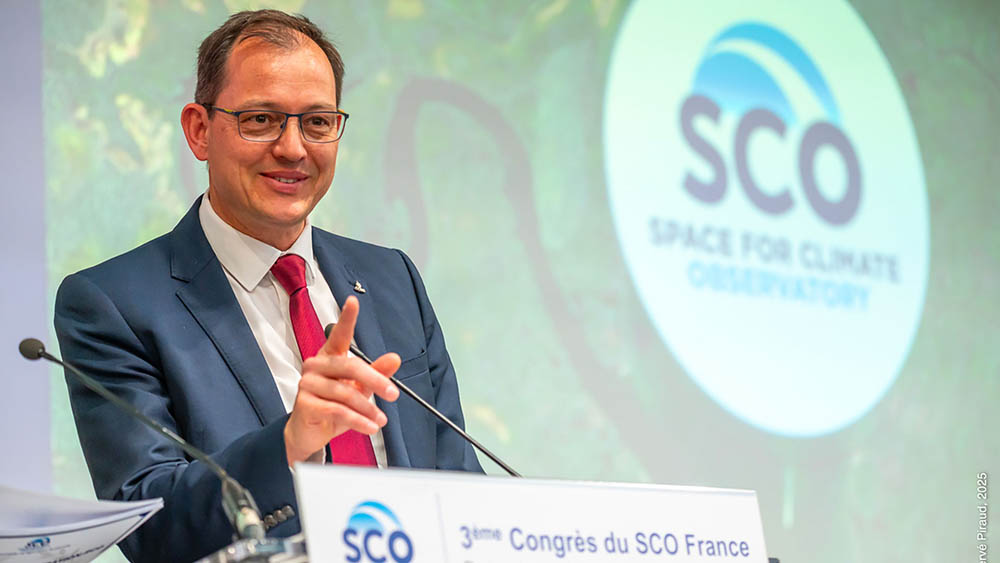Portrait of SCO in 2025: the 6-year review
In just a few years, the SCO has evolved remarkably. While in 2021, Frédéric Bretar reviewed the first two years with a speech based on the transition from ambitions to concept (read here), today he describes a strong and structured alliance, with tools accessible to all, from decision-makers and managers to citizens.
Frédéric, as project manager at CNES, you have been leading the SCO initiative in France for five years and representing this international alliance at all the major events around the world. Can you explain what the Space for Climate Observatory (SCO) is contributing today?
|
Frédéric Bretar at the 3rd SCO France Congress in March 2025. © CNES/Hervé Piraud 2025 |
Frédéric Bretar: Of course. The SCO was launched in 2019 with a clear mission: to accelerate the development and deployment of tools that help communities adapt to the impacts of climate change by leveraging Earth observation data. This involves both providing operational tools to local decision-makers and promoting the deployment of large-scale digital solutions. Today, this mission is more relevant than ever. The SCO serves as a bridge between space data and the local realities faced by local territories. We make extensive use of this satellite data and generate valuable insights accross a wide range of topics: urban heat, water management, coastal protection, preservation of biodiversity and its ecosystem services, etc. What matters is how this information is produced, by whom and for whom. |
In concrete terms, how does the SCO operate in the field?
F.B: First and foremost, the SCO acts as a human catalyst, bringing together scientific and technical expertise around local stakeholders and their challenges. We accredit projects, support their development, and assist with their implementation. Every year, we launch a call for projects - the 2026 call is currently open - to encourage the co-creation of digital tools designed to meet local climate-related needs. These tools are designed to be directly usable, offering tangible operational value for the regions involved.
Beyond the financial support provided by space agencies, the SCO label is a mark of trust, helping projects gain visibility, form partnerships, and achieve scientific validatation for their approach.
The SCO also plays an international coordination role, doesn't it?
|
F.B: Absolutely. The SCO is a real unifying force. It now has 55 signatories - space agencies, public institutions, research centers, civil society, and more. This diversity is reflected in our governance, which is structured around a Steering Committee, a Programme Committee, and specialized working groups. Thanks to this cohesion and our presence at major international events, where we showcase concrete functional tools, the SCO is helping drive momentum toward structured and coordinated global action. |
+ 32 signatories in 6 years 👉 In 2019, 23 space agencies and international UN organizations had signed the Space for Climate Observatory's Declaration of Common Interest. 👉 By 2025, 35 had joined the SCO, along with 20 national agencies involved in climate change, bringing the total number of signatories to the SCO Charter to 55! |
This collaborative approach also applies at the national level. In every project, we ensure that cooperation between developers, users, researchers, decision-makers, and both public and private actors is at the heart of the process. It is this cross-functional approach that guarantees the robustness and relevance of the solutions developed.
Is the general public also involved in the SCO's activities?
F.B: Yes, and this is actually a fundamental aspect. The SCO works to make information accessible, understandable, and useful. Through our certified projects, we support science communication initiatives that help the public better understand both climate change and satellite data. We translate this into visual tools, interactive platforms, and educational events. In addition, some projects, such as SCOlive and Chove-Chuva engage citizen in collecting as much data as possible that is useful for the development and sustainability of their tool.
We also develop general awareness-raising tools such as the Amazonia and SCOdyssey games [see box], to showcase the role of Earth observation data and its potential to support the ecological transition. The objective is clear: to demystify satellite data and turn it into a concrete lever for action for local areas.
|
SCOdyssey, a dreamlike immersion into the raison d'être of the SCO Let yourself be tempted by a technical and poetic adventure and climb aboard SCOdyssey, a spacecraft in Earth orbit chartered by the SCO. From there, explore two virtual worlds (soon to be four) in search of the amazing guardians who embody SCOlutions. |
Amazonia : space to the rescue, a Fortnite adventure Welcome to a journey of about 30 minutes on foot, by canoe, and even by seaplane! It all starts in Kourou, where Ariane 6 took off with an Earth observation satellite. While you are busy taking "field truth" readings to compare the satellite data with reality, a fire breaks out in the middle of the forest... |
What is the link between this data and public decision-making?
F.B: The core mission of the SCO is to connect data with local public policy. Our tools are designed to help local authorities anticipate risks, plan appropriate responses, and measure the impact of the policies implemented. We offer intuitive interfaces, often open source, that can be replicated in other territories. They are constantly evolving, and observing their success trajectories gives us valuable insights.
In terms of data, we are seeing significant use of data from the Sentinel-2, Sentinel-1, and Pleiades satellites, which are at the heart of many SCO projects. These sources enable highly accurate analysis of environmental phenomena.
You regularly talk about concrete tools: can we see them and test them?
F.B: Of course! We have compiled all the tools and working demonstrators in the TOOLBOX section of our website. As all these services are digital and many of them are freely accessible, it is very easy to explore and even use them. For the general public, I highly recommend visiting real-time applications such as TropiSCO, where you can see tropical deforestation, BandSOS, which monitors and forecasts water levels in the Bengal Delta, OpHySE, swhich monitors the state of rivers in French Guiana, and Cimopolée, which tracks any cyclones that appear in the Indian Ocean. Finally, I would add ERA Explorer which allows you to explore 85 years of data providing climatological averages across the globe just by clicking on any point on the map. These are just a few examples; take some time to explore everything the TOOLBOX has to offer.
You mentioned success stories. Can you tell us more about them?
F.B: When we look at how SCO projects have evolved, we can truly assess their relevance: not through metrics, which are often misleading and incomplete, but by placing them in a continuum, in a lifecycle specific to the development of technologies and uses. It is therefore these success stories that provide consistency and sustainability. They generallyfollow four key paths:
- Addressing the impacts of climate change. While uncertainties can sometimes shift the course of a project, we invest considerable energy in keeping things on track!
- Having a reality among users. This is a question of operational realities.
- Designing a functional foundation capable of growing and adapting to other contexts. This illustrates the community feedback we require from projects. Build and inspire!
- Ensuring sustainability. Climate is changing, technology is evolving, and SCO projects are taking different paths!
And if you take the time to look at the portfolio of applications, you will see that each one ticks these four boxes. Communicating about these trajectories will now be one of our priorities.

What future do you envision for the SCO?
F.B: Every day, I see the incredible dedication of the project teams. As climate news becomes increasingly alarming, I also see how the SCO is helping to restore hope ithat change is still possible. I sincerely hope the SCO will shine as brightly as possible, that both decision-makers and the general public will know that there are tools and solutions available to take action and leave a livable world for our children.




